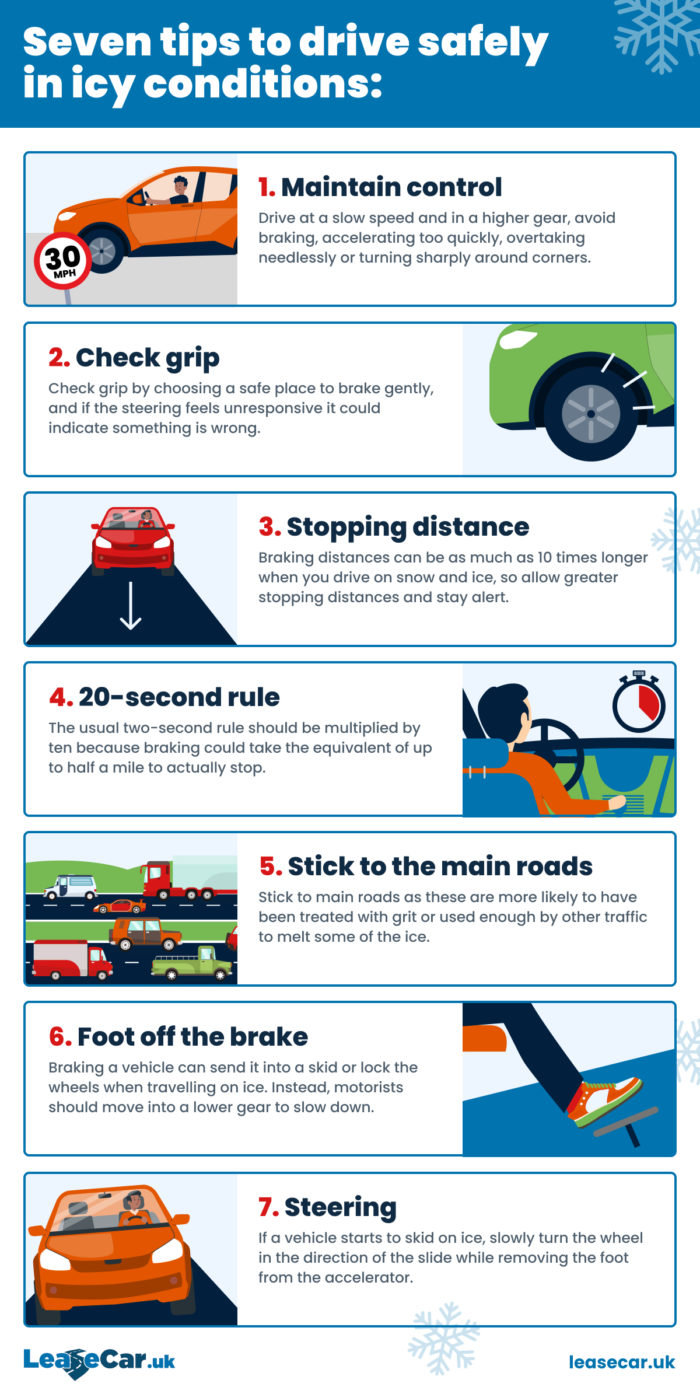Winter is a dangerous time for motorists on Britain’s roads, but the dedicated team at LeaseCar are here to help.
Navigating how to travel safely as temperatures plummet can be challenging for even the most experienced driver.
The return of frosted trees and white skies signals the unwelcome return of treacherous roads, which makes motorists extremely vulnerable.
Here at LeaseCar we care about the safety of all road users, so we are looking at why it is essential to be vigilant and drive with safety in mind at this time of year.
Is winter driving more dangerous?
To put it frankly, yes.
Almost a quarter of UK motorists have been involved in an accident while travelling in severe winter weather.
Driving in wintry weather is much more dangerous than driving in normal road conditions and severe road traffic accidents are as much as 4 times as likely.
Why do more accidents happen in winter?
Drivers are exposed to more risks during winter due to adverse weather conditions, longer periods of darkness and more cars on the road.
People are less inclined to walk, cycle or use public transport when it’s colder, which not only increases congestion but also increases road safety risks and chances of accidents.
Combined with the fact snowy, wet and icy weather conditions are much more likely to occur in the winter months due to lower temperatures – it can be a recipe for disaster.
What is the most dangerous winter hazard for drivers?
Ice is arguably the biggest hazard for motorists when the temperatures drop, and even the smallest amount on the road can be dangerous for all road users.
It takes a vehicle ten times as long to stop on icy roads, which means the stopping distance could be almost half a mile if travelling at 70mph so drivers should keep at least 20 seconds behind the car in front.
What is black ice?
Black ice is a transparent hazard which poses an extreme risk to drivers because it is pretty much invisible to spot.
The only indication of it can be if the road surface appears to be glossy, if other vehicles are losing control and when temperatures are below zero.
This means it catches motorists off guard, preventing proper tyre grip and hindering brake effectiveness.
With this in mind, we have compiled a list of important tips to keep our beloved customers, who we have acquired over 25 years, safe on the roads in icy conditions.
Should I just stay home and avoid driving altogether if the weather is terrible?
Motorists must take extra precautions to keep safe whilst behind the wheel this winter.
Taking steps to adjust driving style like reducing speeds, leaving room for a larger stopping distance and sticking to main roads can all help increase safety for road users.
However, motorists must always expect the unexpected when driving in the winter. When weather conditions are bad, even the most confident driver can be unexpectedly caught out.
In any adverse weather, we recommend that motorists avoid driving unless necessary.
If caught up in adverse weather while driving, like a snowstorm, heavy rain or strong winds, motorists should stay calm and pull over as soon as it is safe.
Stay safe out there folks.

Here are our top tips to drive safely in icy conditions:
- Maintain control
Drive at a slow speed and in a higher gear to retain as much control of the car as possible. It is also important not to brake or accelerate too quickly, avoiding overtaking needlessly or turning sharply around corners where a loss of control is more likely to occur.
- Check grip
By law, the minimum tyre tread depth in the UK is 1.6 mm, but for optimum grip it is advised not to go below 4 mm in winter conditions. Drivers can also check grip by choosing a safe place to brake gently, and if the steering feels unresponsive it could indicate something is wrong.
- Stopping distance
The Highway Code suggests braking distances can be as much as 10 times longer when you drive on snow and ice. Allow greater stopping distances and stay alert for pedestrians and other potential obstructions.
- 20-second rule
An important winter tip to remember when it’s icy is to travel at a longer distance from the car in front. The usual two-second rule should be multiplied by ten because braking could take the equivalent of up to half a mile to stop.
- Stick to the main roads
Avoid shortcuts and rural roads where possible. Sticking to main roads should make car journeys in icy conditions safer, as these are more likely to have been treated with grit or used enough by other traffic to melt some of the ice.
- Foot off the brake
Although it goes against basic instincts, braking is one of the worst things drivers can do and it won’t stop a vehicle from moving on icy roads. Braking a vehicle can send it into a skid or lock the wheels when travelling on ice. Instead, motorists should move into a lower gear to slow down.
- Steering
If a vehicle starts to skid on ice, slowly turn the wheel in the direction of the slide while removing the foot from the accelerator. If skidding to the right, turn to the right and if skidding to the left, turn to the left. Once the car starts to level out, gently straighten the wheel.
